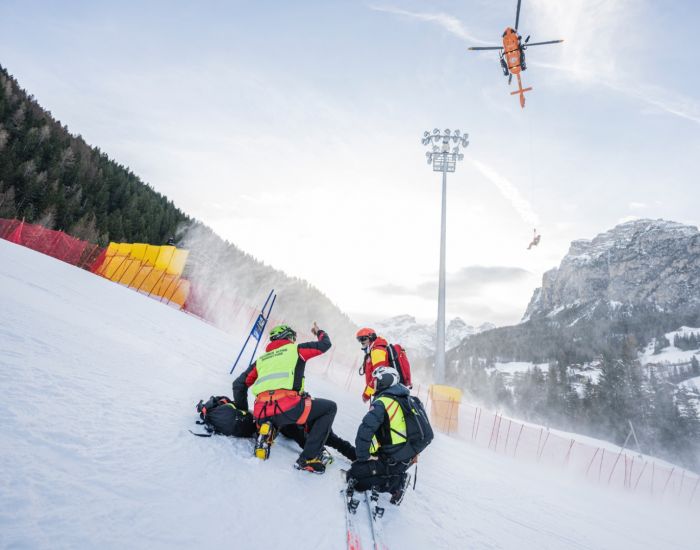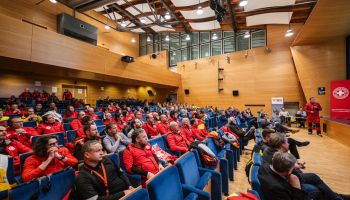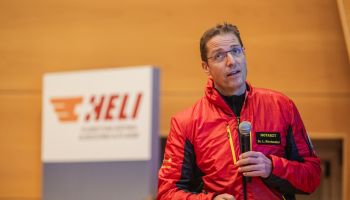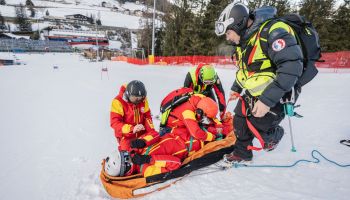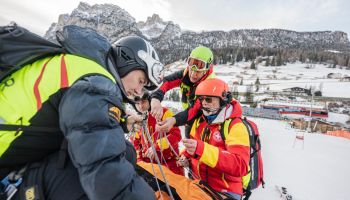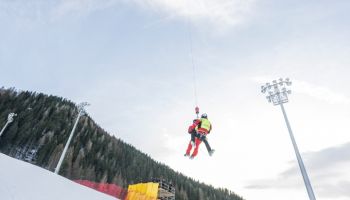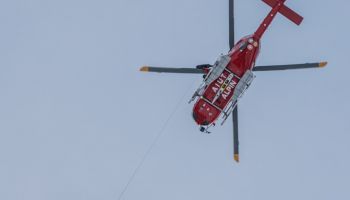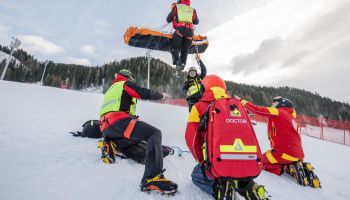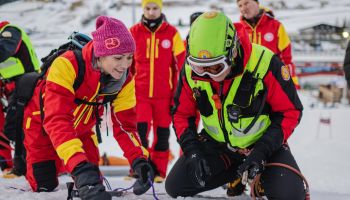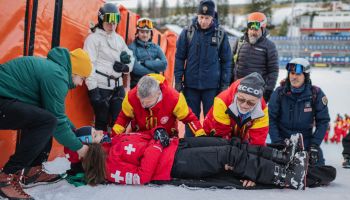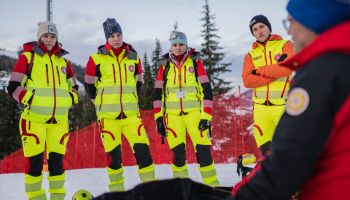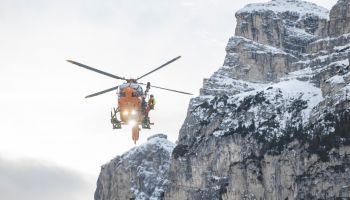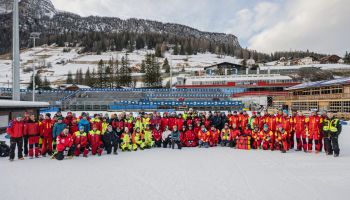International focus on piste rescue services
Some 150 participants from Germany and abroad accepted the invitation to the European Symposium for Rescue Operations in the Alpine Ski World Cup in Alta Badia on 12th December. The focus was on export lectures and care strategies for injured athletes on the race slopes, as well as the legal responsibility of organisers and promoters. A subsequent simulation exercise with the Pelikan 1 and Aiut Alpin Dolomites emergency helicopters on the Gran Risa race piste provided the perfect end to the international symposium.
Emergency doctors, piste rescue teams, air rescue crews and World Cup organisers gathered at the Kulturhaus in Stern in Val Badia. Representatives from the World Cup downhill races in Bormio and Cortina, the major local events in Alta Badia, Kronplatz and Val Gardena/Gröden and a delegation from the Hahnenkamm Race were also in attendance. These included emergency doctor Simon Gasteiger, Peter Haidacher (Mountain Rescue), Lukas Kirchmair and Rainer Hoyer (Christophorus 4), pilot Josef Deutinger and air paramedic, Stefan Pichlsberger.
The common challenges in handling operations on the racetrack were emphasised at the all-day symposium, but most importantly, the different approaches to guaranteeing the best possible care in an emergency: "On the one hand, there are differences in the legal requirements in the various countries. At the same time, we are also talking about different rescue concepts. Basically, it's always about ensuring that the best possible precautions are taken in advance and that the athletes receive the best possible care in the event of a serious fall and are transported as quickly as possible to a hospital with a trauma centre," says Marc Kaufmann, chief physician.
Austria and Switzerland garnered particular attention during this excursion: while the chief physician of Swiss air rescue service REGA, Roland Albrecht, reported on the rescue system in St. Moritz and Adelboden, the chief emergency doctor, Lukas Kirchmair presented the system implemented at the Hahnenkamm Races and concluded with great satisfaction: "The symposium offered a unique opportunity to exchange ideas with colleagues. By and large, all organisations work according to similar principles. However, due to different legal frameworks, the competences are distributed differently. One of the outstanding features of the Hahnenkamm Race is the streamlined organisation consisting of the Kitzbühel Ski Club, Mountain Rescue and ÖAMTC Air Rescue. We have been working with consistent teams for years and can therefore rely on a high level of operational expertise in the event of an emergency - which in turn creates safety," says Lukas Kirchmair. The head physician for anaesthesia and intensive care medicine at Schwaz District Hospital is also the chief air ambulance emergency doctor for ÖAMTC Christophorus 4, a role in which he and the C4 crew have been supporting the Hahnenkamm Races since 2018.
Photo © Weißes Kreuz/Harald Wisthaler

